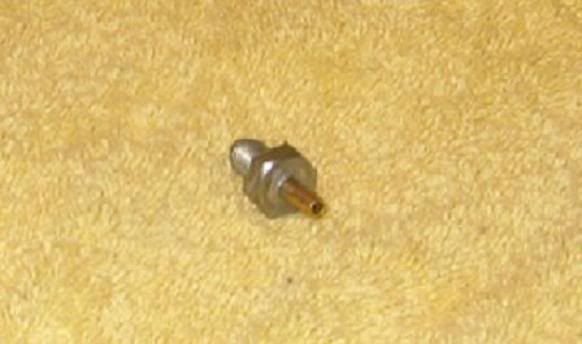Greeting Longshot47
The conventional or tradtional breech plug is simply a threaded stud screwed into the breech. A tang is welded to the top of the stud.
Nowadays the better breech plugs are machined as one piece. Of course this leaves a lot of metal chips laying on the milling machine table.
There are also some good ones that are investment cast out of good alloy steel and machine threaded.
When this type of breech is used, the touch hole is located and drilled just in front of the end of the plug in the barrel. This is the tradition breech plug and has been and is still used successfully on thousands of rifles and pitols.
This type of breeching system is also used for the drum and nipple percussion caplock ignition system. In fact, many original flintlock rifles were converted to caplock by drilling out and tapping the flash hole for a drum and nipple.
My flintlock rifle is a convertable flintlock/caplock using this principle. The touchhole liner is removed, the drum and nipple installed, the flintlock replaced with a caplock action, and presto; transformation.
The Nock Breech is similiar to the traditional breech but has a much longer threaded stud. the extra length is drilled and coned to form an early type of patent breech.
The touch hole is drilled through both the barrel and the breech at the end of the cone. This is a stronger breeching system, since for a micro-second, gas pressure is excerted against the threads from inside the cone, thus forcing that part of the breech plug threads tighter into the barrel breech threads.
This system can also be used for flintlock, percussion lock,
or convertabile. My current long rifle project has a stainless steel breech that is combination Nock and patent breech design convertable flintlock/caplock. The touch-hole liner/drum and nipple screw in to the breech only, not any part of the barrel.
It is my opinion that the Nock Breech system should be used on 13/16 or 7/8 barrels of 40 caliber or larger for purposes of safety. The wall thickness of one of barrels does not leave much for threading to install a touch hole liner or drum. The larger the bore, the the thinner the wall thickness.
I am also of the opinion that the safety concern is one reasons the companies like Pedersoli use a modified Nock Breech system. I have seen and know of other rifles that had
the drum and nipple blown out because of the thin walls.
Somewhere on the forum, somebody posted a good cutaway sectional view of the Nock Breech.
The patent breech is an improved Nock Breech designed for caplock use. The best example is found on the Hawken rifle. These are an investment cast alloy steel breech with the snail cast in place. There are at least two examples of original Hawken rifles with a brazed on snail.
Hope this is the information you wanted.
Best regards and good shooting,
John L. Hinnant





